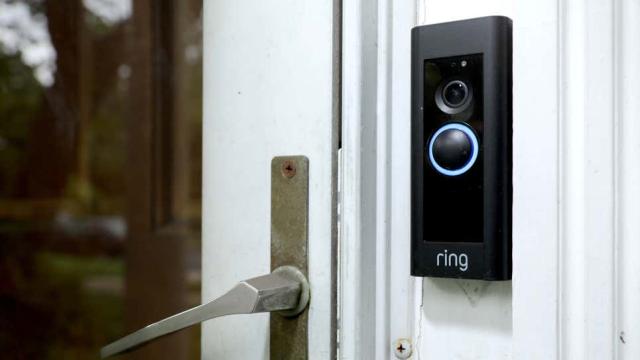Amazon-owned Ring is making end-to-end encryption for its security cameras available globally.
Ring first rolled out end-to-end encryption earlier this year as a technical preview for customers interested in trying it out and sharing their feedback. But now, any user can opt into the feature through the Ring app on their iPhone or Android device. Only the enrolled mobile device has the “special key” needed to unlock the videos, which Ring said it “designed so no one else can view your videos — not even Ring or Amazon.”
Not all Ring devices are compatible with the new end-to-end encryption feature. Only 13 of the company’s latest devices work with E2EE:
Ring Video Doorbell Pro
Ring Video Doorbell Pro 2
Ring Video Doorbell Elite
Ring Video Doorbell Wired
Ring Spotlight Cam Wired
Ring Spotlight Cam Mount
Stick Up Cam Elite (2nd Gen)
Stick Up Cam Wired (2nd Gen)
Indoor Cam
Ring Floodlight Cam (1st Gen)
Ring Floodlight Cam Wired Pro
Ring Floodlight Cam Wired Plus
Ring Stick Up Cam Plug-In (3rd Gen)
Glancing at Ring’s support page, it appears the company’s battery-powered video doorbells and cameras don’t yet support end-to-end encryption.
The new security feature requires you to generate a unique passphrase. It might sound counterintuitive, but write it down and put it somewhere safe, because Ring cautions that there is no way to recover a lost passphrase. Note that once end-to-end encryption is available, streams can only be viewed by the device registered to the Ring account.
In addition to E2EE, Ring added support for authenticator apps, which offer an extra layer of security over standard two-factor SMS. And the Ring and Neighbours apps now uses CAPTCHA, which can help prevent bots and spammers from taking over your account.
Ring has had a spectacularly spotty track record when it comes to its security cameras. Users’ passwords have been leaked, and hackers have harassed folks in their homes. Ring has also been under scrutiny for its relationship with law enforcement, from providing freebies to working with police departments around the country to obtain possibly incriminating security footage. This is probably why the company is emphasised that enabling end-to-end encryption means “no one” has access to any security footage but the person who sets it up.
End-to-end encryption is also a marketing opportunity, as Ring is one of the few major security camera makers in the U.S. to offer it. For comparison, Google’s Nest security cameras and Netgear’s Arlo don’t currently offer end-to-end encryption. Blue by ADT, the long-standing security company’s brand of connected cameras and devices, offers end-to-end encryption, as do overseas brands like HAICAM.
But it is important to note that end-to-end encryption is turned off by default — you’ll have to opt in to safeguard your footage.
